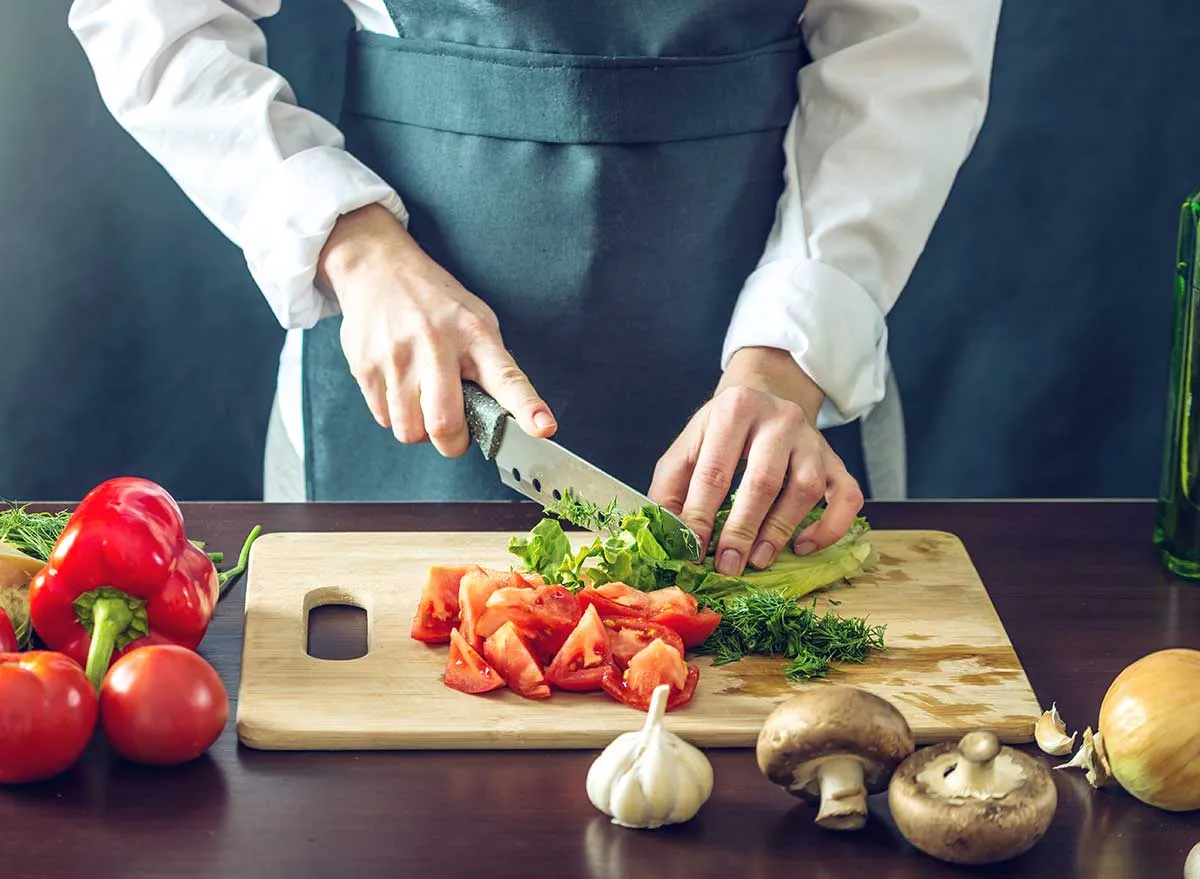Every kitchen professional knows that a good cutting board is an indispensable tool. But what happens when that essential item starts to warp or bend? The answer lies in learning how to flatten cutting board. This guide will explore various methods to restore your cutting board, ensuring it remains a reliable surface for all your culinary needs.
A flat cutting board not only makes food preparation ***efficient*** but also maintains the integrity of your knives. Without a flat surface, your knives can become dull quicker, and uneven chopping can lead to accidents. Therefore, knowing how to flatten cutting board is crucial for every kitchen professional aiming to maintain *high standards*.

Understanding the Common Causes of Warping
Before diving into solutions, it's essential to understand why cutting boards warp. Typically, moisture, heat, and improper cleaning habits contribute to this issue. Wooden cutting boards, in particular, are susceptible to changes in humidity and temperature. They can absorb heat from the stove or moisture from improperly dried things, causing them to warp.
Different Types of Cutting Boards
Cutting boards come in various materials - wood, plastic, glass, and bamboo. Each has unique properties and challenges:
- Wooden Cutting Boards: These boards are favored for their durability and aesthetic appeal. However, they require regular maintenance to keep them flat and functional.
- Plastic Cutting Boards: Lightweight and resistant to warping, plastic boards are easier to clean but may become scuffed over time.
- Glass Cutting Boards: While sleek and modern, glass boards can dull knives quickly and are prone to cracking.
- Bamboo Cutting Boards: A sustainable option, bamboo is strong yet susceptible to moisture and heat.
Methods to Flatten Your Cutting Board
If your cutting board has begun to warp, dont worry! There are several methods to rectify this situation.
1. Steaming Method
One effective technique involves using steam to reshape your board. Heres a step-by-step guide:
- Boil water in a pot and place a rack above the boiling water.
- Place your cutting board on top of the rack, ensuring it is not touching the water.
- Cover the board with a damp towel to trap steam.
- Allow it to steam for about 30 minutes.
- Remove it and place it on a flat surface, putting weight on it to keep it flat while it dries.
2. The Weight Technique
This method is straightforward and requires minimal materials:
- Simply wet the warped area of your cutting board with water.
- Place weights on top of the board evenly distributed across the entire surface.
- Let it sit for several days and check for progress, reapplying moisture as needed.
3. Planing the Surface
If your board is significantly warped, using a planer may be necessary:
- Ensure the board is dry before using a hand or electric planer.
- Evenly plane the surface until it achieves the desired flatness.
- Sand any rough edges afterward to prevent splinters.
4. Call in the Professionals
Sometimes, the best solution is to seek help from a professional. Many woodworking shops can restore your cutting board to its former glory.
Maintenance Tips for Cutting Boards
Prevention is always better than cure. Here are some maintenance tips for your cutting boards:
- Always clean your board immediately after use to prevent bacteria buildup. Check out this article on cutting board safety.
- Periodically apply mineral oil to wooden boards to prevent drying out. For more on this, refer to how to oil and maintain.
- Store boards in a cool, dry place to prevent moisture retention which can lead to warping.
- Consider using separate boards for meats and vegetables to reduce cross-contamination.
When to Replace Your Cutting Board
Even with proper care, cutting boards wont last forever. Here are signs its time for a replacement:
- Deep grooves that harbor bacteria and cannot be cleaned.
- Severe warping that cannot be fixed.
- Any signs of mold or persistent odors.
If you find yourself needing to replace your board, check out this guide on when to replace your cutting board.
Conclusion
Knowing how to flatten cutting board is a skill every kitchen professional should have. With the right techniques and regular maintenance, you can ensure the longevity of your essential culinary tool. Remember, a well-maintained cutting board is not only about aesthetics; it dramatically impacts your culinary experience. Keep your cutting board flat, and it will serve you well for years to come!

FAQs
1. Can I use water to flatten my wooden cutting board?
Yes, using water combined with weight techniques can help to flatten a warped wooden cutting board.
2. How often should I oil my wooden cutting board?
It is recommended to apply mineral oil every few weeks or when your cutting board looks dry.
3. Is it safe to use a warped cutting board?
Using a warped cutting board can lead to uneven cutting and may pose a safety risk. Its best to flatten it before use.
As an Amazon Associate, I earn from qualifying purchases.


























